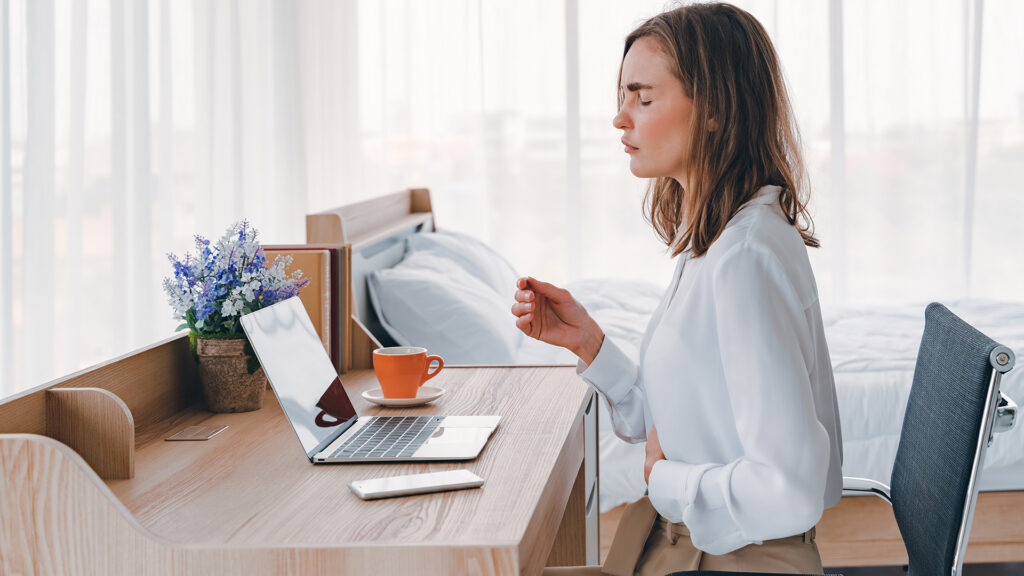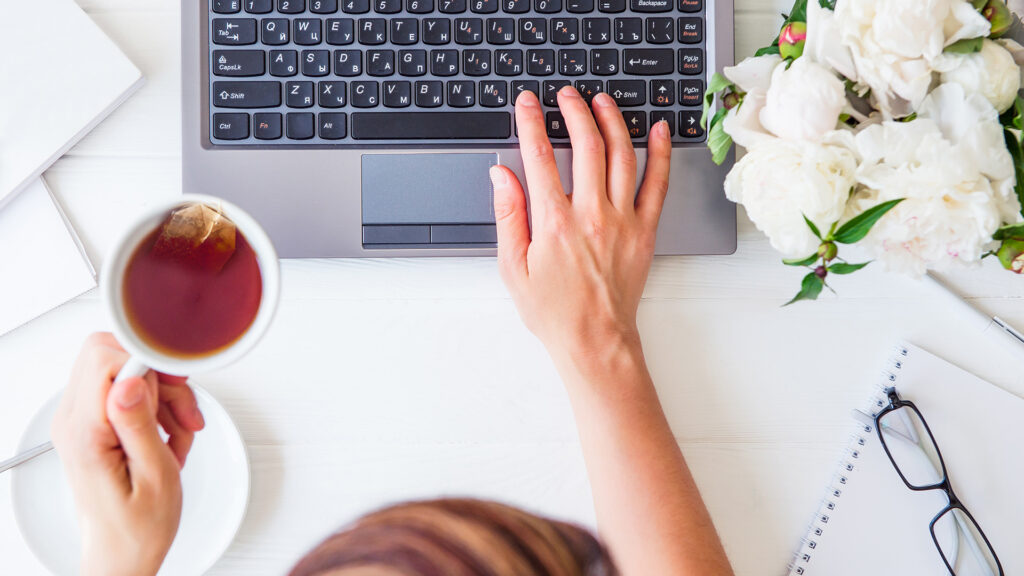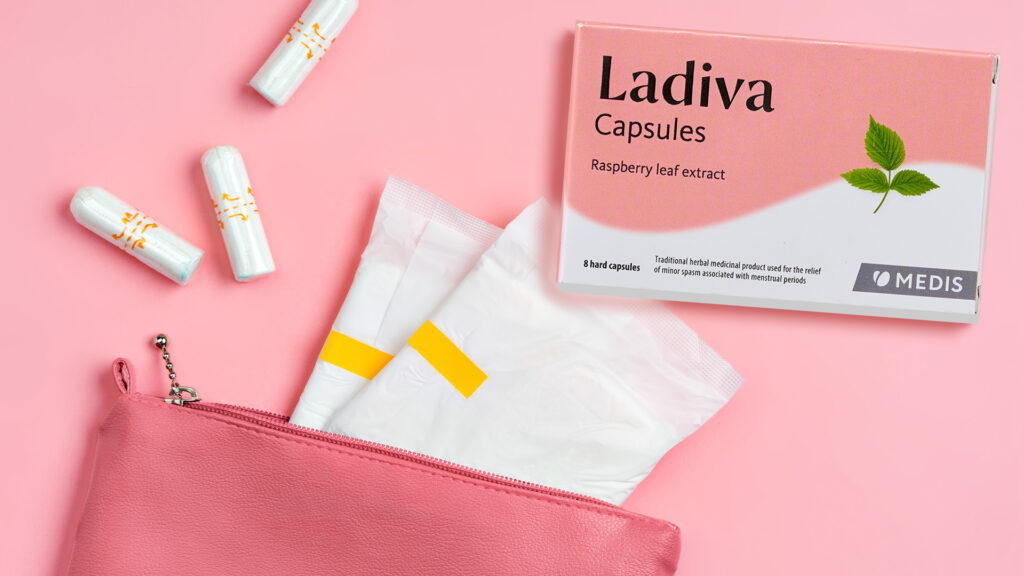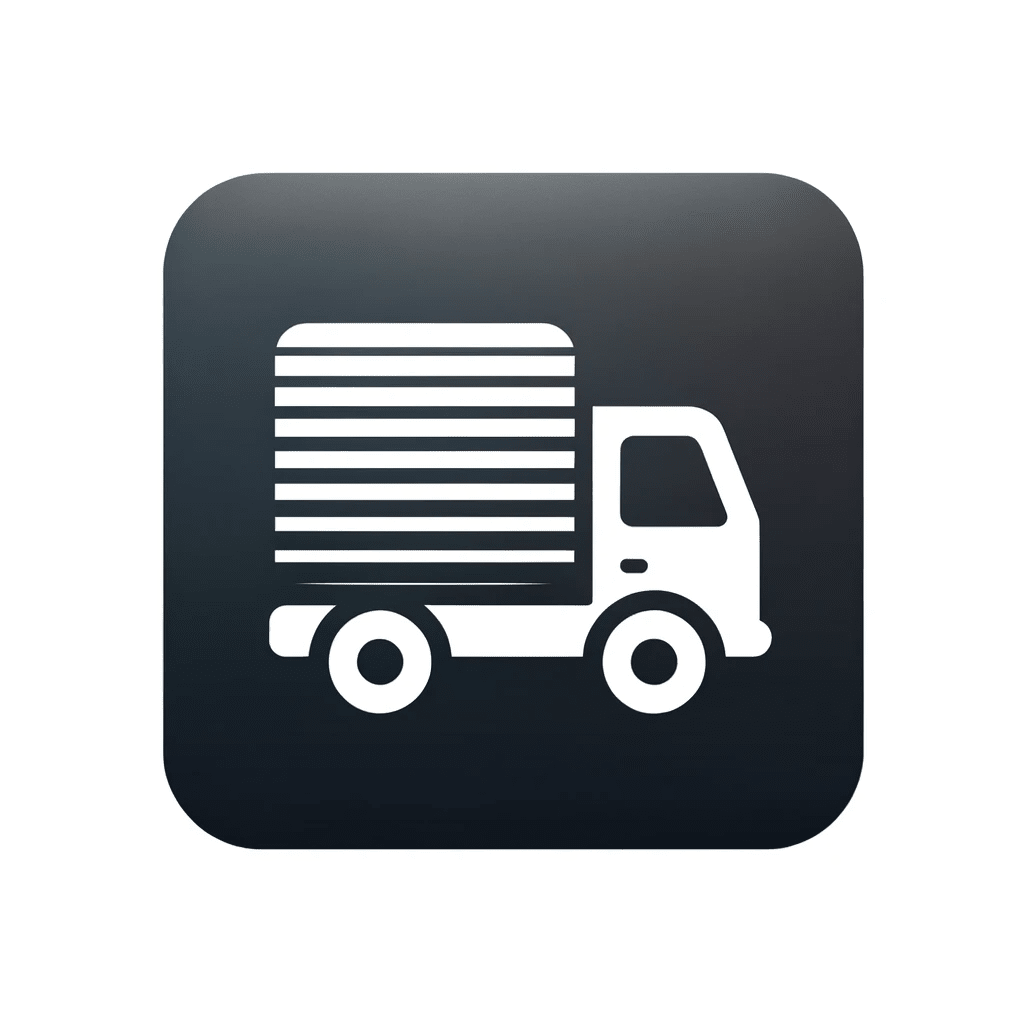How to deal with painful periods at work
- READING TIME 8 MIN
- PUBLISHED November 02, 2023
- AUTHOR Donna
Key takeaways
- Women+ lose nine days of work productivity per year because the period symptoms are just too much to handle.
- Silent pressure to camouflage menstrual pain at work still persists – only 14 percent of women+ have taken time off because of their periods.
- Period leave is a controversial topic. Some believe it’s a step towards greater equality, while others think it will reinforce stereotypes about menstruating women+.
- What can you do better to handle periods at work? We give you eight tips. Number one: if you haven’t already, start tracking your cycle.
How to deal with painful periods at work
Cramps, headaches and other period symptoms aren’t exactly helpful when you try to focus on work. Discomfort alone (not to mention violent cramping episodes) can massively stifle motivation for work and sap productivity.
Recent research has laid out the scope of the problem. A 2017 study published in the British Medical Journal found that women+ who worked through period pain lost nine days’ worth of productivity per year. 1
The number of women+ who experience painful periods is far from insignificant. Up to 29 percent of women+ with period pain say the pain is severe, one study found out. 2 Some monstrous periods are even considered “almost as bad as a heart attack”. 3
Women+ who suffer from endometriosis are especially at a disadvantage. Around ten percent, who by some estimates 4 have the disease, miss out on eleven hours of work each week or 25 days per year on average, mainly owing to reduced effectiveness while working, according to a study from ten countries. 5 Many women+ are therefore forced to find part-time work or are unable to work at all.

Period shame
Silent pressure to camouflage menstrual pain still persists. One telling fact is that only 14 percent of women+ have taken time off because of their periods. And even when they have called in sick, only 20 percent gave the real reason, a large-scale Dutch study showed. 6 This doesn’t mean women+ wouldn’t mind a bit more wiggle room. Two-thirds of the survey participants wish for more flexible working hours during their periods.
Offices are also rarely supporters of period acceptance. In 2018, Thinx, a period-proof underwear brand, found that 42 percent of women+ experienced period shaming at work. 7 Most respondents have hidden a pad or tampon on their way to the bathroom, and 58 percent report feeling embarrassed because of their period.
One woman explained that she finds it super stressful when she is trying to hide her period from the men surrounding her at work. “You have to make it past all your noisy male coworkers who are watching you go back and forth to the restroom,” she said in a survey, commissioned by Free the Tampon, an organization that campaigns for freely accessible tampons and pads in public spaces. 8
Many highly-publicized real-life cases of period shaming only underpin the issue. One Norwegian company, for instance, ordered all female staff to wear red bracelets during their periods “to explain why they are using the toilet more often”. 9 Other examples include the German supermarket chain Lidl – the company has been accused of secretly recording menstrual cycles of their employees. 10
When people treat menstruation with suspicion, it can also lead to oversight of period support for women+ who need it. Almost one-third of British women+ do not have constant access to a toilet at work and 72 percent have no way of getting sanitary products, a 2019 survey of UK workplaces. 11

Period leave: what is it and which countries allow it
Should menstruating women+ get special days off work each month to better handle period symptoms? Opinions are divided.
Period leave already exists in some places. Japan, for example, introduced the policy over 70 years ago. Not many women+ use it, however – less than one percent of female employees, a 2017 government survey has shown.
Japan isn’t the only country with a period leave possibility. South Korea, Indonesia, Taiwan and certain regions in China and India have also adopted the policy with a different range of entitlements – both paid and unpaid.
In the meantime, for some companies, period leave is also a political statement. Indian food delivery company Zomato, for example, said their period leave policy was established, in part, to “change perceptions in India where periods are shrouded in shame”.
Criticism
Period leave is almost non-existent in the United States, Europe and Australia. A handful of companies have introduced period leave on their own, but the general public is not all on board.
Some critics believe that paid period leave might widen the gender pay gap and negatively affect the hiring chances of women+. Others are also concerned that menstrual leave will worsen the stereotypical idea of women+ workers who are “too emotional, unreliable or expensive”.
Gynaecologist Dr. Miriam Mottl also thinks that periods as such shouldn’t stop women+ from working. At the same time, she makes a clear distinction between a “normal” period and the severe pain that some women+ experience. “The real question is if it affects your life. Can’t go to work because of period pain? If not, that’s a sign that you have to do something about it,” she says.
How to beat period pain at work
Periods, in the meantime, don’t care for any of that. They’ll come when they’re due – often making a surprise appearance at work. How to best handle them, especially if they turn up with cramps and headaches? Don’t assume a foetal position just yet as here are some tips you can use and take:
Track your cycle and plan ahead
You should be expecting your period, not the other way around. Tracking your cycle gives you the chance to avoid any surprises. Figure out when you are likely to start bleeding and plan your tasks accordingly. There are many apps that help you track your cycle; alternatively, you can just as easily use a simple calendar.
Find that heating pad
Heat pads or hot water pouches can be lifesavers. They are easy to use, super convenient, cheap, subtle and they’ll help you tame those monster cramps. Heat is known to ease the contraction of the muscles, providing some much-needed relief. 12

Move around a bit
We feel you; exercise is probably the last thing on your mind when period pain kicks in. But you could think of it as a small price to pay for a more relaxed uterus. Get up, take a stroll or stretch your body if you have a chance. You don’t have to go all ironwoman, some gentle exercise will already increase your blood circulation, relax the body, help release endorphins and simply make you feel energized again.
Take breaks
Make sure your take rest breaks. If you have the possibility, you could also try meditation. Stress is known to increase the likelihood of painful menstruation and meditation can be a great antidote against excessive worrying.

Drink enough water and stock up on teas
The number one rule is to stay hydrated. Drink at least six to eight glasses of water daily which decreases the chances of becoming bloated. Also, stock up on tea brews. Research recommends raspberry leaf, chamomile, ginger or peppermint – they all have anti-inflammatory properties and can help ease the cramps. For extra convenience, take LADIVA capsules– the only herbal medicine that is there to fight those (mild to moderate) period cramps.

Be mindful of what you eat
Since you are already in control of your cycle, plan your diet accordingly – if possible, days before the period actually starts. Go big on green leafy veggies such as kale, spinach, sprouts and broccoli. Squash, bell peppers, berries and avocados will also help. And throw in some apples and nuts.
If you’re thinking about deploying supplements to your anti-cramp diet, consider taking vitamins B1, D and E. Calcium and magnesium may also help, as well as omega-3 fatty acids, found in fish oil or flaxseed oil.
On other hand, avoid foods that make you thirsty, bloaty or upset your stomach in other ways. The usual suspects are salty and spicy foods and alcohol. Try to avoid that morning office coffee as well – it restricts blood flow from the uterus and it may worsen the cramps. Maybe go with green tea the next time?
Make comfort a priority
If your usual attire consists of tight skirts and heels, go rather for something that’ll give you more comfort. Select more cosy pieces that are flexible and made of soft materials.
Talk to your boss
We know that period talks with your boss are not the easiest. Period shame is a real thing. But think of it this way: you would tell your boss if you felt sick or if you had a splitting headache. Think of cramps and other problematic period symptoms as a health issue. That could give you some extra confidence to go in and open up about it.
REFERENCES
- https://bmjopen.bmj.com/content/9/6/e026186.full
- https://pubmed.ncbi.nlm.nih.gov/24284871/
- https://qz.com/611774/period-pain-can-be-as-bad-as-a-heart-attack-so-why-arent-we-researching-how-to-treat-it/
- https://www.yalemedicine.org/conditions/endometriosis
- https://pubmed.ncbi.nlm.nih.gov/21718982/
- https://bmjopen.bmj.com/content/9/6/e026186
- https://nypost.com/2018/01/03/nearly-half-of-women-have-experienced-period-shaming/
- https://www.fastcompany.com/3061417/bleeding-on-the-job-a-menstruation-investigation
- https://www.dailymail.co.uk/news/article-1334400/Female-staff-Norway-ordered-wear-red-bracelets-period.html
- https://www.theguardian.com/world/2008/mar/27/germany.supermarkets
- https://dpglearn.co.uk/blog/human-resources/overcoming-period-stigma-in-the-workplace/
- https://www.webmd.com/women/news/20010326/researchers-test-heating-pads-as-home-remedy-for-menstrual-pain#1

